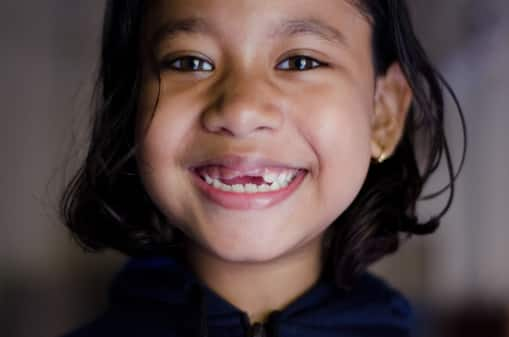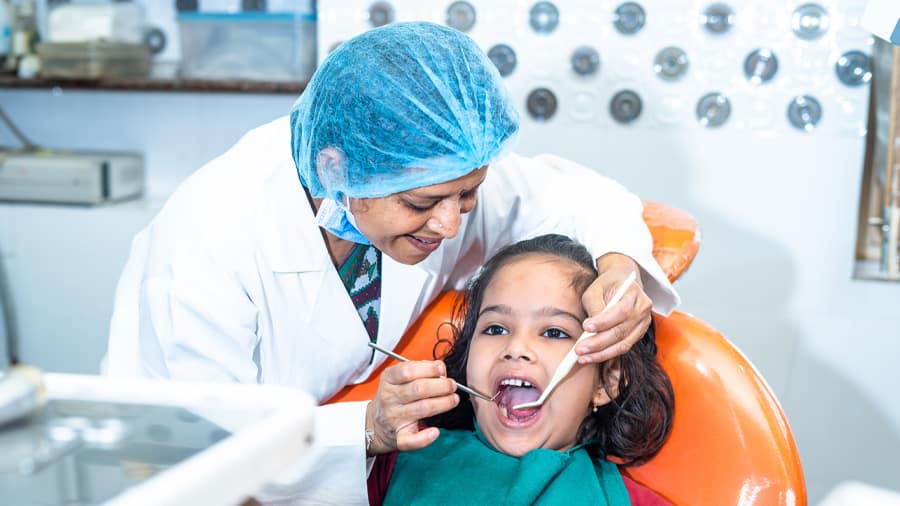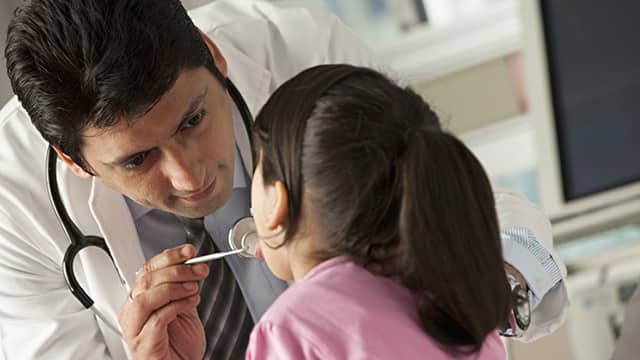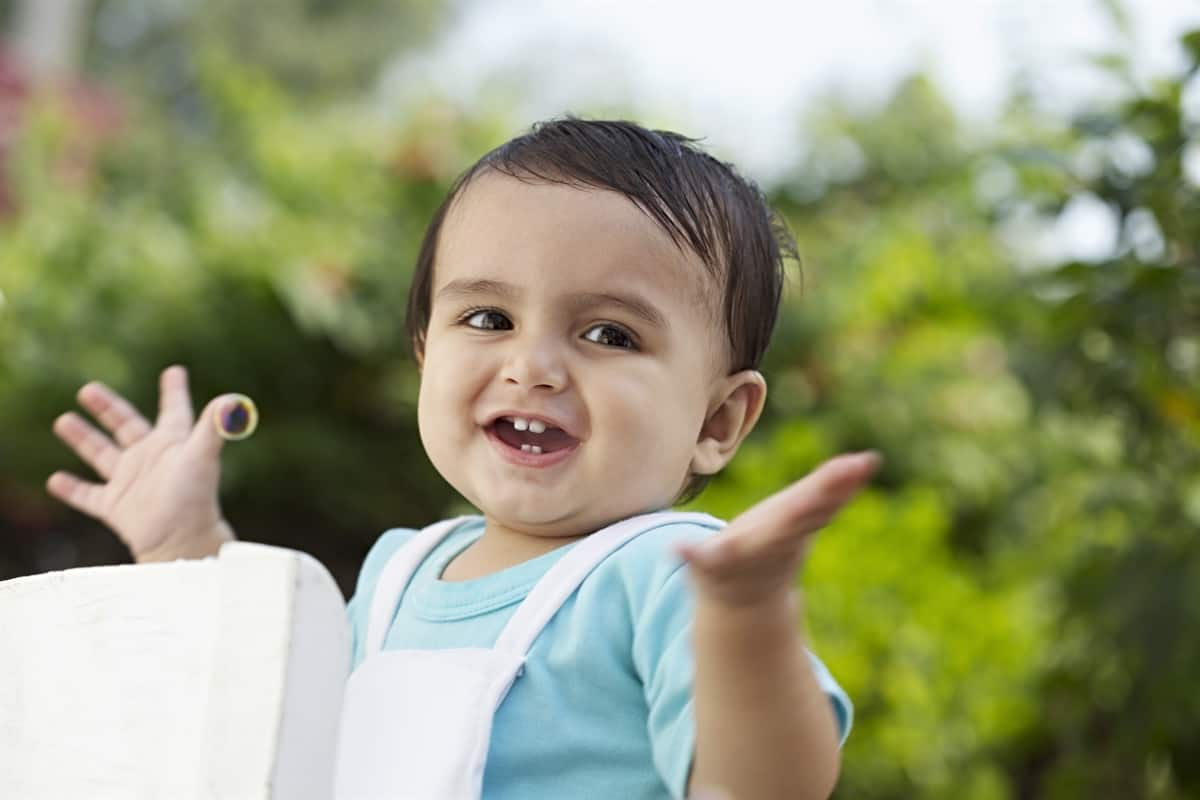How Many Baby Teeth Do Kids Lose?
Let us start with the basics: how many teeth does a child have? Kids typically have a total of 20 primary teeth, also known as baby teeth or deciduous teeth. These teeth act as placeholders for the permanent teeth that will come in as the child grows. According to the Indian Dental Association, children usually begin losing their baby teeth around six years of age.
The teeth-shedding process usually starts with the lower, central incisors (the two front teeth), which are frequently the first to go. From there, kids' teeth tend to fall out in the same order in which they appeared. As for the number of baby teeth lost, children will typically lose all 20 of their primary teeth by the time they reach their early teenage years.
When Do Baby Teeth Fall Out?
A child’s teeth do not stick around forever. As children continue to grow, more baby teeth gradually loosen and fall out, making space for their permanent teeth. By around the age of 6 or 7, kids often lose their first tooth, with the last, usually a second molar, gone by age 12 or 13. When a tooth becomes loose, it may take a few days or even months to fall out completely. The speed of this process depends on how quickly the tooth root dissolves and how much the child wiggles the tooth. The more the child wiggles it, the sooner it will fall out, and a new tooth will begin to appear in its place soon after.
It is important to remember that, while there is a typical timeline for tooth loss, every child is unique. Some children may start losing their teeth earlier or later than others, and that is completely normal. However, if children's teeth are prematurely lost due to an accident or tooth decay, it could indicate a bigger problem, especially in the latter scenario. Typically, it can take several months for a tooth to completely grow in.
But if the tooth has not grown even after six months, take your child to a health professional for a proper evaluation. Also, if a tooth has not fallen out within six months of becoming loose, it is then a good idea to see a child’s dentist for a proper diagnosis and treatment.
After a Tooth Falls Out
While losing a tooth marks a significant phase of tooth development, the dental care that a child needs during this time does not end with a fallen tooth. After a tooth falls out, it is essential to ensure proper care of the gums and prepare for the arrival of permanent, healthy teeth. Here are a few things that you can do to maintain the dental health of the child after shedding a tooth:
Encourage your child to gently rinse their mouth with warm water once the tooth falls out, especially if there is bleeding, to keep the area clean and prevent infection.
Ensure to make your child brush their own teeth twice daily and floss once every day to practise good oral health routines along with healthy eating habits.
Use a child-friendly fluoride toothpaste like Colgate Toothpaste for Kids (6-9 years old), as it strengthens the tooth enamel, gently scrubs off germs, and protects from dental decay, plaque, and bad breath.
- Use a soft-bristled toothbrush while brushing, like the Colgate Toothbrush for Kids with extra soft bristles, to avoid further irritation and discomfort in the area where the tooth has fallen out.
- Consult a healthcare professional or paediatric dentist for regular dental check-ups to monitor the healing process and ensure that the kids teeth are developing correctly.
If there are any concerns or complications after a tooth falls out, such as persistent bleeding, severe pain, or signs of infection, it is crucial to contact a dentist for further evaluation and treatment. However, by following these steps and providing proper care after a tooth falls out, parents may help ensure a smooth transition and promote healthy dental development for their child.
To sum up, the transition of children from their kids teeth to their permanent adult teeth marks a significant milestone in their growth, with the process typically beginning around six years of age and concluding by their teenage years. Understanding the timeline and order of tooth loss, as well as the importance of proper dental care during this period, is crucial for parents to ensure the oral health of their young children’s teeth. By maintaining good oral hygiene habits, seeking professional dental care when needed, and being vigilant for signs of gum disease and tooth decay, parents can help their children develop healthy teeth and gums.
Frequently Asked Questions
- What is the normal age for baby teeth to fall out?
The normal age for baby teeth to fall out varies, but it typically starts around the age of 6 or 7. However, every child is unique, so some may start losing their teeth earlier or later than others.
- How do you treat a loose tooth naturally?
To naturally treat a loose tooth, encourage your child to brush gently, rinse with warm salt water, and eat crunchy fruits and vegetables. If there is severe pain or signs of infection, consult a dentist for further evaluation.
- What to do when the child loses a first tooth?
After a child loses a tooth, ensure they rinse their mouth with warm water to prevent infection and maintain good oral hygiene habits like brushing and flossing on a regular basis. Regular dental check-ups are important to monitor children's teeth healing and ensure proper tooth development.
- What causes early tooth loss in children?
Early tooth loss in children can be caused by various factors, including tooth decay due to poor oral hygiene, accidents or injuries to the mouth, and genetic factors affecting tooth development. Regular dental check-ups and proper oral hygiene practices can help prevent early kids' teeth loss and promote overall dental health.
This article is intended to promote understanding of and knowledge about general oral health topics. It is not intended to be a substitute for professional advice, diagnosis or treatment. Always seek the advice of your dentist or other qualified healthcare provider with any questions you may have regarding a medical condition or treatment.
ORAL HEALTH QUIZ
What's behind your smile?
Take our Oral Health assessment to get the most from your oral care routine
ORAL HEALTH QUIZ
What's behind your smile?
Take our Oral Health assessment to get the most from your oral care routine













